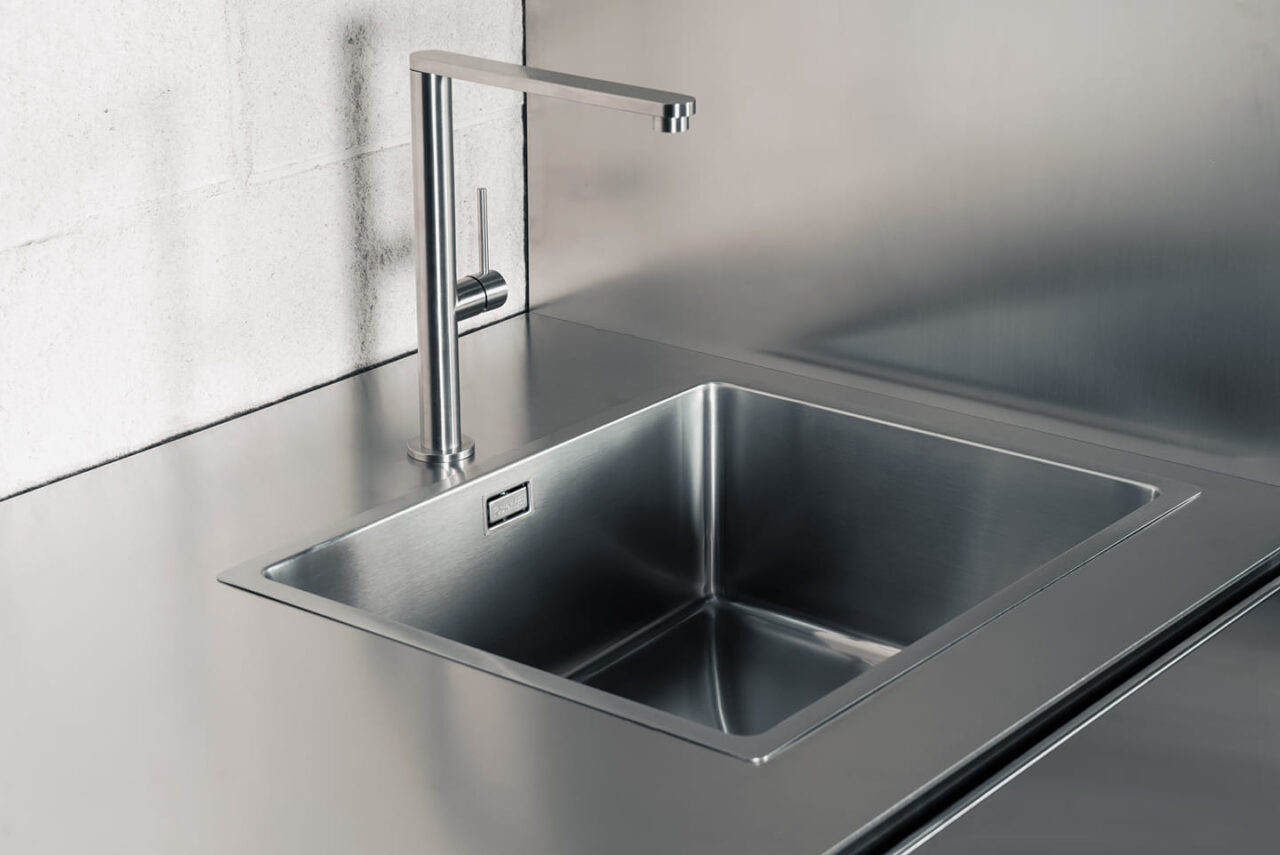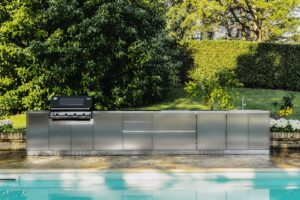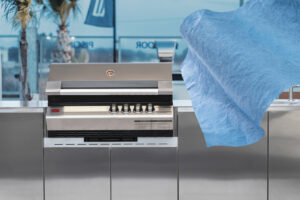At the top of the list of regrets, when designing an outdoor kitchen, is very often (we see it in some of our customers) not having included a sink in the space next to the hob. We at OF have always designed sinks, and here we tell you why you should always include one, even in your kitchen.
Why do you need a sink in the outdoor kitchen?
A sink makes every outdoor kitchen more functional, practical and usable. First of all, it works as a practical hand washing station for those who cook. Moreover, it eliminates the need for guests to enter the house to wash their hands before or after meals. It is then used to wash the vegetables and other ingredients for food preparation and to wash the dishes that contained raw meat, so that they can be reused for cooked meat without cross-contamination. Not only that, but it can come in handy on your barbecue evenings: washing barbecue tools and outdoor grilling accessories helps to maintain order. Similarly, if you store dishes, glasses and crockery in your outdoor kitchen, you could also wash them on site. If you have a drinks station or an outdoor bar, a sink is then useful for preparing drinks, cleaning crockery and blenders and washing fruit to garnish.
How to use it: hot water yes or no?
Once you have decided that you need a sink, the next question to ask yourself is “how to use it?” You will then understand if you also want hot water and how to proceed with the connection drains. The simplest and least expensive (but also the less elegant) option is to avoid the installation of plumbing and to simply connect the sink to a garden hose which is in turn connected to an outside tap. The drain will be either in a bucket (and you can use this water to water the plants) or through a PVC flexible hose in the lawn. However, this option limits the possibilities of using your sink. It will be fine for washing hands and rinsing vegetables, but since you will not have hot water, you will not be able to use it to wash and sanitise dirty dishes, or dishes and tools for grilling. Moreover, if waste waters are discharged into the yard, it is not possible to rinse leftovers of food or grease residues from dishes, tools and utensils, because this would attract parasites. If you plan to connect to it internal plumbing systems, it is advantageous and economical to place the outdoor sink near the house. To optimize the workflow in the outdoor kitchen, place the outdoor kitchen sink next to the outdoor dishwasher, if you have one, and close to the rubbish and waste bins.
Sizes and materials: here are which you can choose from
Sink size options for an outdoor kitchen range from mini bar sinks to standard size sinks, but in general the larger the sink, the more practical and versatile the use will be. Stainless steel sinks such as the ones we produce in OF are a great solution: they are weatherproof, easy to clean and coordinate with the grill and other appliances in an outdoor kitchen. However, there are also other finishes available on the market, such as stone or copper, which can be used for a different style, although in terms of usability, hygiene and durability, steel is the main material. Finally, consider adding a sink cover, a practical additional accessory. When the sink is not in use it acts as a lid to prevent leaves and debris from collecting, and can turn into a practical chopping board when the outdoor kitchen is in action.






